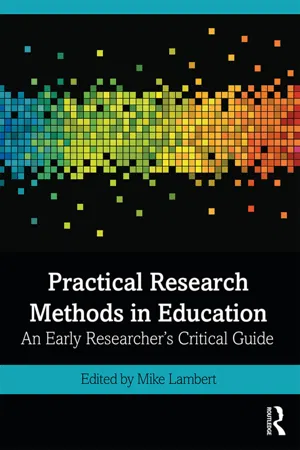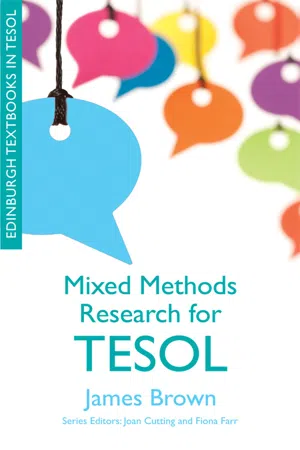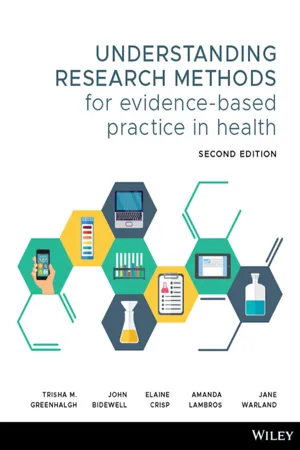Psychology
Quantitative Data
Quantitative data in psychology refers to numerical information that can be measured and analyzed using statistical methods. This type of data is used to quantify behaviors, attitudes, and other psychological variables. It provides researchers with objective and precise measurements, allowing for statistical analysis and the identification of patterns and relationships within the data.
Written by Perlego with AI-assistance
Related key terms
1 of 5
12 Key excerpts on "Quantitative Data"
- Maggi Savin-Baden, Gemma Tombs(Authors)
- 2017(Publication Date)
- Bloomsbury Academic(Publisher)
CHAPTER FIVE Quantitative Data in digital contexts Introduction Until this point, this book has focused predominantly upon qualitative research data in digital contexts. By ‘qualitative’ we mean data in non-numerical format, such as visual data and textual data, whilst ‘quantitative’ data is that which is represented in a numerical format. Whilst these methodological terms have often been contrasted with one another, we suggest that hard binary distinctions of qualitative/quantitative are less relevant in the digital age than in former years. For instance, there are examples now of numerical data being presented visually, and, increasingly, methods overlap, with non-numerical data being recategorized and subsequently quantified. It is for this reason that in this chapter we refer predominantly to qualitative and Quantitative Data, as opposed to qualitative and quantitative methods. We begin by examining what is meant by Quantitative Data in the digital age and presenting the different types of Quantitative Data available to researchers, as illustrated in Table 5.1. In the second section of the chapter, some of the key methods employed for gathering Quantitative Data are presented, along with examples of innovative educational research practice using digital methods. RESEARCH METHODS FOR EDUCATION IN THE DIGITAL AGE 100 Quantitative Data in the digital age Quantitative educational data for the digital age seems to fall into three broad categories: 1 Individual data provide information about the student’s identity, characteristics and portrayal within the learning situation, such as demographic data (e.g. name, age, gender, race), educational data (e.g. topic of study, modules chosen) or personal data (e.g. avatar appearance in a virtual world). Such data are rarely the central focal topic in educational research, but they are, rather, collected and used alongside engagement and learning data.- eBook - ePub
Practical Research Methods in Education
An Early Researcher's Critical Guide
- Mike Lambert(Author)
- 2019(Publication Date)
- Routledge(Publisher)
It is still common for researchers working in the education field to regard ‘quantitative-qualitative’ as a methodological divide, in which they have to choose a side. This chapter rejects this view, taking as its starting point the notion that researchers should view them merely as different types of data and that they therefore need to understand how both are collected, analysed and interpreted. As using the quantitative option can seem particularly problematic, here are three reasons why readers who are nervous of numbers should consider familiarizing themselves with Quantitative Data processes:What is quantitative research? What are Quantitative Data?• Having some understanding of Quantitative Data will improve your ability to assess investigations which use quantitative approaches, particularly if you are new to research.• Being able to incorporate Quantitative Data into your own research could strengthen its impact, particularly if you are interested in influencing aspects of education practice or policy. Although they often use them carelessly and unreflectively, policymakers like numbers.• Having an improved understanding of Quantitative Data and research will put you in a better position to evaluate or conduct mixed-methods investigations.The application of quantitative methods in social-science research derives from interest in the 19th century in experimental investigation in the natural sciences. This sought to understand the processes of cause and effect through manipulation and controlled testing. However, it became clear that many of the issues explored in social sciences, such as education, do not lend themselves well to experimental approaches, so researchers began from the 1950s to apply them to what became known as ‘quasi-experimental’ and ‘non-experimental’ situations – these approaches are considered in more detail later in the chapter.Provocatively, Berliner (2002:19) has described what social scientists, and particularly educational researchers, do as the ‘hardest to do science […] because humans in schools are embedded in complex and changing networks of social interaction’. It is engaging with this social complexity that makes the application of experimental research to education so challenging (Hadfield and Jopling, 2018), and it is partly as a consequence of the need to address this complexity and the limitations of the persistent quantitative-qualitative divide, manifested in the so-called ‘paradigm wars’, that mixed-methods research design (Tashakkori and Teddlie, 1998) gained ground in the 1990s. - eBook - PDF
Successful Dissertations
The Complete Guide for Education, Childhood and Early Childhood Studies Students
- Caron Carter(Author)
- 2018(Publication Date)
- Bloomsbury Academic(Publisher)
The overall aim of this chapter is to convey the essence of what is involved when using quantitative methods. The chapter begins by exploring the suitability of quantitative methods to an area of study. Variables, the mainstay of quantitative research, are discussed at length, in terms of how they are defined, categorized and measured. Quantitative Data can be obtained in a number of ways, such as by asking questions (using questionnaires or interview schedules), observing and recording behaviour, and through reviewing existing documents. This chapter therefore outlines some of the key features of the more common methods used by undergraduate students, with reference to some of their strengths and limitations. The what, why and when of quantitative methods What are quantitative methods? Quantitative methods are used to gather factual or attitudinal information in numerical form. Therefore, they are used to ascertain how much, how many, how frequently and/or, to what extent something occurs or exists, be this a fact or an attitude. It is worth noting that Quantitative Data do not necessarily start off in numerical form; they can often take the form of words which researchers later translate, by means of applying numerical codes, into numbers. Quantitative research conceptualizes reality in terms of variables and the relationships between them and relies on numbers, counts and measurements in order that these relationships can be portrayed using tables, charts and graphs. Data is generated through asking questions and getting responses (self-report methods) or by observing and recording past (secondary) or present behaviour. Why and when is it appropriate to use quantitative methods? Students are often unsure as to whether quantitative, qualitative or a combination of both methods are called for, hence the inclusion here of some information that will hopefully aid this crucial decision. - eBook - ePub
- Sandra van Thiel(Author)
- 2021(Publication Date)
- Routledge(Publisher)
Analysing Quantitative DataThe aim of this chapter is to offer an introductory guide to researchers who are new to using Quantitative Data. It is not my purpose to provide an exhaustive review of all possible statistical techniques and formulae. A single chapter would not suffice – besides, there are plenty of other, specialized textbooks on statistics in general and on specific statistical techniques. The focus here will rather be on the different phases of analysing Quantitative Data. I shall also give an overview of a select number of statistical techniques and discuss their suitability for answering certain research questions.When applying statistical techniques, it is always a good idea to seek some external advice first: from other researchers, from specialists in research methods and techniques, by consulting textbooks or using the help function of the computer program employed for analysis. Do not be intimidated by statistics! Researchers have to be able to think logically but need not be mathematicians in order to be able to conduct a quantitative study.Broadly speaking, a study with Quantitative Data consists of three phases: data collection, data ordering and data analysis. All three phases will be discussed. The chapter concludes by listing a few points worthy of consideration with respect to the reliability and validity of Quantitative Data.10.1 Quantitative DataQuantitative Data are always numerical in kind. They can either be numbers that have a certain intrinsic meaning (such as money in your local currency, a date or a number of units of something), or consist of numerical scores (for example, an evaluation of a respondent’s answer on a scale from 1 to 10). Researchers can assign scores to all kinds of variables. For example, the replies given by a group of respondents to the question ‘Which political party did you vote for during the last elections?’ can be quantified by assigning a separate score to every possible answer (for example, 1 = Conservative; 2 = Liberal Democrat; 3 = Labour). The score number constitutes a shorthand way of expressing a respondent’s answer. - eBook - PDF
Practical Research Methods in Education
An Early Researcher's Critical Guide
- Mike Lambert(Author)
- 2019(Publication Date)
- Routledge(Publisher)
This chapter rejects this view, taking as its starting point the notion that researchers should view them merely as different types of data and that they therefore need to understand how both are collected, analysed and interpreted. As using the quantitative option can seem particularly problematic, here are three reasons why readers who are nervous of numbers should con- sider familiarizing themselves with Quantitative Data processes: • Having some understanding of Quantitative Data will improve your ability to assess investigations which use quantitative approaches, particularly if you are new to research. • Being able to incorporate Quantitative Data into your own research could strengthen its impact, particularly if you are interested in influencing aspects of education practice or policy. Although they often use them carelessly and unreflectively, policymakers like numbers. • Having an improved understanding of Quantitative Data and research will put you in a better position to evaluate or conduct mixed-methods investigations. 56 Michael Jopling What is quantitative research? What are Quantitative Data? The application of quantitative methods in social-science research derives from interest in the 19th century in experimental investigation in the natural sciences. This sought to understand the processes of cause and effect through manipulation and controlled testing. However, it became clear that many of the issues explored in social sciences, such as educa- tion, do not lend themselves well to experimental approaches, so researchers began from the 1950s to apply them to what became known as ‘quasi-experimental’ and ‘non-experimental’ situations – these approaches are considered in more detail later in the chapter. Provocatively, Berliner (2002:19) has described what social scientists, and particularly educational researchers, do as the ‘hardest to do science […] because humans in schools are embedded in complex and changing networks of social interaction’. - Kenan Dikilita?, Carol Griffiths, Kenan Dikilita?, Kenan Dikilita?, Kenan Dikilita?, Kenan Dikilitaş(Authors)
- 2017(Publication Date)
- Palgrave Macmillan(Publisher)
129 © The Author(s) 2017 K. Dikilitaş, C. Griffiths, Developing Language Teacher Autonomy through Action Research, DOI 10.1007/978-3-319-50739-2_6 6 Analysing the Data Let us suppose that some interesting-looking data has been collected, and now we want to know what to do with it. Let us be quite clear that we do not actually have to do anything with it unless we want to. Maybe we are quite happy just to have performed the collection exercise, perhaps we have gained some insight into whatever it was that was puzzling us, and that is as far as we want to go. If, however, we want to go beyond this point, analysing the data can be quite an intimidating prospect. So, let us have a look at it, and see if we can break it down into manageable pieces which will produce robust results. Types of Data: Quantitative Since there is often confusion with these basic concepts, and they are not always easy for non-mathematicians to understand, the most impor- tant from an action research point of view will be explained here. This is important, since inappropriate analysis renders what might otherwise have been interesting findings quite invalid. 130 1. Numerical data. This term refers to data which are actually real num- bers. Examples are: (a) Age—we can assume that someone who is 20 is twice as old as someone who is 10. (b) Income—someone earning $15,000 is earning half as much as someone earning $30,000. (c) Test scores—a student who scores 90 has scored 50% more than a student who scores 60. This kind of data is sometimes also called interval (because the val- ues have regular intervals between them) or continuous (operating over a range). Numerical data can be analysed using parametric tests (which operate within set parameters, e.g. means, Pearson’s correlation, t-tests, ANalysis Of VAriance (ANOVAs), Multivariate ANalysis Of VAriance (MANOVAs), multiple regression) as long as they are normally distrib- uted (see later section).- eBook - PDF
Statistics for the Social Sciences
A General Linear Model Approach
- Russell T. Warne(Author)
- 2017(Publication Date)
- Cambridge University Press(Publisher)
2 Levels of Data In Chapter 1, we saw that most of the social sciences are dominated by quantitative research, which is a form of research in which researchers convert their data into numbers so that they can be analyzed with statistics. This chapter is about the process of converting data into numbers – a process called measurement. For researchers in the physical sciences, the process of measuring data numerically is often relatively straightforward. Physicists, chemists, and biologists all know how to measure the weight, speed, or length of an object, and there are few disagreements in these fields about how to gather numerical data. For social scientists the process of recording data in numbers can be a particularly difficult problem. For example, let’ s imagine a researcher who wants to determine whether parents who are more affectionate to one another are also more attentive to their children. How should the researcher measure “affection” and “attentiveness”? Unlike height or weight, there is no obvious way that these variables should be measured. Indeed, it is possible that researchers – especially from different branches of the social sciences – could disagree vigorously about how to measure these variables. This chapter explains the basic principles of measurement and the main framework for thinking about the measurement of variables. Learning Goals • Explain what an operationalization is and why it is necessary to create operationalizations to conduct research. • Distinguish among the four levels of data in the organization system created by Stevens (1946). • Demonstrate the benefits of collecting data at the highest level possible. • Explain the differences between continuous and discrete data. Defining What to Measure The first step in measuring quantitative variables is to create an operationalization for them. - eBook - PDF
- James Brown(Author)
- 2014(Publication Date)
- Edinburgh University Press(Publisher)
Quantitative methods can be used to study large numbers of people, and thus can supply breadth to the description of the behavior of large groups. Quantitative methods can focus on clearly defined phenomena in probability terms (i.e., in terms of p values); can control many variables and focus on two or three; can maintain constant conditions over time and across variables; can be used to study relation-ships, cause and effect, and quantitative predictions; and therefore can be used to test and validate existing theories and hypotheses, or new ideas. Typically, quantitative studies are cross-sectional, so they are suitable for taking snapshots at a particu-lar time or comparing snapshots across time. The data in quantitative studies are relatively controlled, so they are relatively easy to replicate. In addition, quantitative 64 mixed methods research for tesol methods provide an etic (i.e., outsider’s) perspective, which has the extra benefit that the researcher is relatively independent of the research setting, and is viewed as being so. And finally, since quantitative research appears to outsiders to be precise, numerical, and “scientific,” the results may have relatively high credibility with research consumers in positions to get things done. All in all, quantitative research methods have considerable strengths. VARIABLES, CONSTRUCTS, AND OPERATIONALIZATION Primary research focuses mostly on data gathered in one way or another. Data tend to be things that we observe and record so that we can try to find useful and interest-ing patterns among them. As children we gathered data on a daily, indeed minute- by-minute basis, especially about language. We heard sounds and found patterns. When we saw Mom, she would say “mama”; when we saw Dad, he would say “dada.” Gradually, we saw the patterns and began to repeat those sets of sounds when we saw Mom and Dad. - Terry Hanley, Clare Lennie, William West, SAGE Publications Ltd(Authors)
- 2012(Publication Date)
- SAGE Publications Ltd(Publisher)
There are most certainly very qualitative approaches that can be taken to observations, for example immersing oneself in a culture and undertaking an ethnographic study in watching the world around you, but quantitative measures can also be employed in making sense of looking at things. However, in order to do this, we need to be sure we know what the thing is that we are looking at or for. If we return briefly to the chicken soup scenario, would it have been logged as dessert, chicken and sweetcorn soup or chicken soup? We might, for example, look at gender differences in aggression using observations, but beforehand we would have to create a scale of behaviours we believe constitute aggression and some sort of agreed rating of these. To some extent the PCEPS and CTS-R scales that were discussed above are an attempt to capture what we might mean by good practice in therapy. Whilst we see the discussion and disagreement on the rating scales as a useful vehicle on which to assess a trainee’s development, this discussion brings with it a disadvantage to the world of quantitative research in terms of limiting the extent to which it can be considered as ‘water-tight’ and so allowing for it to be worked with as parametric data. In order to assess the reliability of the data obtained, researchers often double-rate the same event and look to see the extent to which their scores compare (inter-observer reliability). We might then be able to present that data collected for further statistical analysis, to see if there are any significant differences occurring between boys and girls and their levels of aggression (however we define this).It is now to methods of data analysis that we turn.Making sense of numbers: data analysis
It is often this part of the discussion that is the most stress-inducing for those who are rather more averse to numbers. When we introduce the dreaded statistics to our trainees, we make it clear that the intention of the session is just to outline the use of numbers and the ways that they can be of use in counselling and psychotherapy research. In terms of analysis, we always say that we will give you a flavour of what can be done and, should you want to go into further depth, we will guide you to additional resources and people. This chapter is no different. We hope that we have kept you with us so far, and in the closing sections we offer what are hopefully digestible definitions of some statistical terms that you might well come across, along with some additional reading, should you want to take your quantitative musings further.As outlined above, the type of data that we collate drives the types of analysis that we can perform on it. If we have higher-level data (interval or ratio data to use the precise terms) then we are able to undertake statistical tests that tell us something about the significance of any relationships or patterns. We will come to this in a little while, but for now let’s keep things simple.- eBook - PDF
- Aparna Raghvan(Author)
- 2023(Publication Date)
- Society Publishing(Publisher)
Data encoded as variables, again, do not reflect such qualitative changes of mental operations that underlie externally similar answers (see also Toomela, 2008, in press-b). Between variables postulate the interpretability of covariations. By analyzing correlations of variables, modern quantitative psychology also assumes that components of mental attributes can be discovered. This postulate is questionable as well. As a rule, from the same elements in qualitatively different relationships qualitatively different wholes emerge. However, Quantitative Data analysis is not suitable for taking the quality of relationships into account. For example, human language is based on units – words – that are composed in different relationships from a limited number of sounds or letters. We can take a series of events, words, and find perfect covariation between variables, sounds, in those events. Let us take, for instance, a series of events – words – this-shit-hits-pool-loop-polo. From our observation of Quantitative Research in Psychology: A Brief 27 those six cases, it creates the following data-file so that variables represent presence or absence of letters in each event/word. With those data and would not get any closer to understanding what is happening one could make many different statistical analyzes. It would discover that this data set can be perfectly “explained” by one factor, etc., perhaps one would discover that all variables are perfectly correlated. Statistically, for a quantitative scientist such results would be a perfect dream. And yet all this would have no meaning. In the table the data show where the problem is – after quantification first three and last three qualitatively different cases are identical. Here it is unknown when solving usual scientific problems, it is known that the cases are not identical. - eBook - PDF
- Irene Hall, Jo Campling(Authors)
- 2017(Publication Date)
- Red Globe Press(Publisher)
speed and accuracy in analysis. But while such programs offer assistance, they do not remove the need for the researcher to understand the underlying rationale of analysis in order to control the process and choose the most appropriate ways of sorting, collating and presenting their information. Interpreting the findings still relies on the researcher's skill and judgement. As with Chapter 4, there is much that has been written on the analysis of data, both from survey questionnaires and from quali-tative interviews. Within this chapter, it is only possible to present an outline of the most common approaches to quantitative and quali-tative data; a short list of suggested reading is included at the end. QUANTITATIVE OR STRUCTURED DATA Data and the rules of measurement As Chapter 4 noted, quantitative research involves turning abstract concepts into concrete indicators which can be measured through the process known as operationalization . Indicators are what can be researched and the researcher needs to identify specific factors which are variables. In planning the research, links between vari-ables were hypothesized. The analytical stage is the opportunity to test whether links exist and, if they do, how strong the connections are ± for instance between the age of respondents (variable one) and their level of satisfaction with a program (variable two). A variable has a set of categories and there are rules about how the different categories may be analysed, depending on the scale or level of measurement being used. Variables may be measured at different `levels of measurement' (depending on the type of variable), and the level of measurement will determine what kinds of analyses may be performed. (Rose and Sullivan, 1996: 17) Three different scales or levels of measurement for variables are usually distinguished as nominal; ordinal; interval/ratio. A NALYSING THE D ATA 137 - Trisha M. Greenhalgh, John Bidewell, Jane Warland, Amanda Lambros, Elaine Crisp(Authors)
- 2019(Publication Date)
- Wiley(Publisher)
Methods should be exactly repeatable by other researchers to enable comparison of results across studies. Research is collaborative between the researcher and participants; interpretation of results may explicitly reflect the researcher’s values. Exact replication across studies is not so important. Accurate, repeatable measurement of amounts (quantities); counting and categorising. Proven accuracy and consistency of measurement are favoured. Less emphasis on counting or measurement; instead collects verbal or text information — qualities rather than quantities. Numerical data are analysed statistically to describe the sample and further results as counts (numbers of people), percentages of groups, averages and other summary statistics; also to estimate or predict characteristics of a population based on data from a sample. Little or no statistical analysis or presentation of numerical results; analysis identifies common or notable themes from participants’ response. Main results are presented in narrative text form. Sample characteristics may be summarised statistically. Interpretations largely are confined to answering a specific research question determined before data collection and analysis, while allowing for unexpected findings. Open-ended speculation is discouraged. Results are interpreted discursively, open-endedly, with allowance for disciplined speculation. Research agenda may be revised during the study in response to unexpected findings. Pdf_Folio:45 CHAPTER 5 Quantitative research 45 Thus, we can see how quantitative research relies on tightly planned sampling and data collection methods, rigorous numerical measurement of amounts or categories, and statistical presentation of results with a view to answering a specific question or testing an idea. 5.2 Quantitative research designs LEARNING OBJECTIVE 5.2 What are the major quantitative research designs? Scientific research in health is planned and set up before the project commences.
Index pages curate the most relevant extracts from our library of academic textbooks. They’ve been created using an in-house natural language model (NLM), each adding context and meaning to key research topics.











